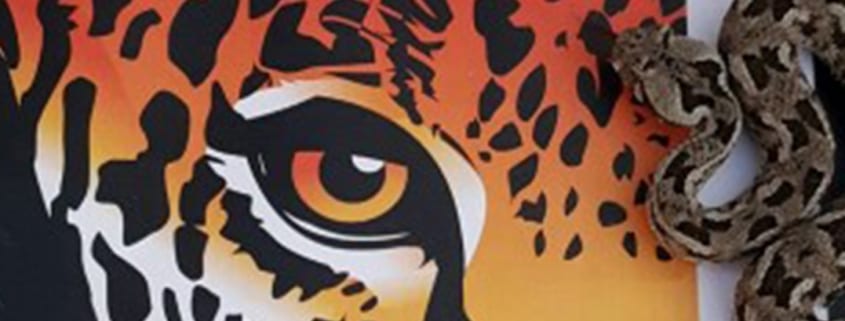Rediscovered Snake Sparks Major Conservation Initiative
The rediscovery of the threatened Albany Adder – a tiny viper which was soon to be declared “extinct in the wild” since it had not been seen in almost a decade – is sparking a major conservation initiative to safeguard this rare reptile’s habitat in South Africa.
Human-induced habitat destruction, paired with poaching for the pet trade, has led the Albany Adder to be considered one of the rarest snakes in the world (it is listed as Critically Endangered in the most recent reptile conservation assessment for South Africa published in 2014). Because this snake is endemic – meaning it is found only in a specific, limited range – there is a much higher risk that habitat fragmentation and loss could lead to the species’ extinction if left unchecked.
Conservation organizations Endangered Wildlife Trust (EWT) and Rainforest Trust understood that to secure a future for the Albany Adder, protecting its habitat needed to be a priority. Before committing to the creation of a protected area though, the presence of this incredibly rare snake first had to be confirmed, as it was last scientifically recorded almost 10 years ago. The most recent sightings had occurred at a site currently being mined, and the EWT team consulted with local herpetologists regarding the possibility that the species could be found there again. After determining the ideal timeframe (active male adders pursuing mates are easier to spot than dormant ones), there was only one thing left to do: go into the field and search for them.
Armed with cameras, measurement tools and a healthy dose of anxiety (since only 12 Albany Adders had ever been officially recorded), conservationists set out to affirm the species’ existence in November 2016. As the EWT team travelled to the Eastern Cape Province, the prevalent concern wasn’t with the risk of coming in contact with the snake’s venom, but an even scarier prospect: that it may already be too late to save the species.
For almost an entire week, the team searched through bushes, under rocks and in limestone holes for the greyish tan snake that is perfectly adept at blending into its environment. Even well into the night, conservationists drove down numerous highways and dusty farm lanes, hoping to catch a glimpse of the snake in a different context.
By the last day – with many findings of other reptile species but no sign of the Albany Adder – morale was low. The EWT team decided to return to the first area that had been surveyed as a last attempt to document the species. As luck would have it, their vehicle was low on fuel so the EWT Field Officer Michael Adams had to leave the team and travel to the nearest town roughly 20 miles away to refill. On his way back to the site, Adams came across a sight that had been almost given up on: a single female Albany Adder slithering across the road.
“I was massively excited, but I had no one to celebrate with!” Adams said.
After calling the other conservationists to the discovery, documenting and then releasing the female adder back into its natural habitat, Adams and the EWT team continued searching into the evening. Incredibly, they came across a second Albany Adder, this time a young male. The EWT team conducted another search in March 2017, finding additional adders including a pregnant female. Between the two surveys, five Albany Adders were documented, bringing the total recordings of the species to 17 confirmed sightings.
Bolstered by the success of their searches, the EWT and Rainforest Trust are now working to protect the habitat of this highly threatened snake. The Coega Bontveld vegetation which the adder species inhabits has been drastically reduced by development activities and is under continuous threat from mining, road construction and the expansion of a nearby industrial complex.
Because Albany Adders have been confirmed at the mining site, there is a strong case for protecting the land through a Biodiversity Stewardship Program, which is a way for private landowners to work with conservation authorities to manage the ecosystems within their lands with a focus on protecting biodiversity. The EWT is currently discussing land rights with various landowners in the area, with the aim to create a protected area that is close to 1,000 acres in size. According to Adams, this proposed nature reserve will be the first protected area in Africa to be dedicated to the security of a Critically Endangered snake species, and other wildlife such as Blue Cranes, Secretary Birds and Ludwig’s Bustards will benefit as well.
“The Albany Adder will only survive if it is given formal protection and its last remaining habitat is protected into perpetuity,” said Rainforest Trust’s Director of Conservation Programs James Lewis.
“If we don’t do this now, then the loss of this incredible species will rest on the shoulders of our generation. We can act, and we can save this species. We must.”
Header photo: Rainforest Trust supported EWT’s expedition to rediscover the Albany Adder. Photo by Michael Adams.




